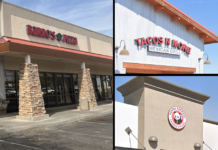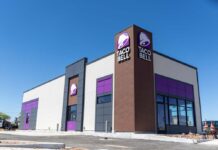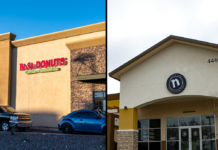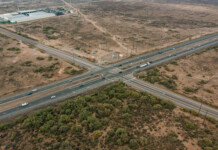Maricopa commuters are beginning to wince in pain as the prices at the pump have begun to rise again. They seemed to have momentarily paused in the month of March, giving everyone a temporary sigh of relief, but the relief is officially over.
“It’s not going down,” said Vimal Patel, manager of the Shell station on John Wayne Parkway. “Expect it to go up ten cents a week, and I don’t know for how long.”
In Arizona, the average price is currently at $3.65 with one gas station in Williams being at $4.19. According to Lundberg, an independent market research company, July 2008 marked an all-time high with the national average being $4.11.
Right now the national average is at $3.80 and has a chance at breaking previous all-time highs. With that in mind, many are wondering how high the rates will be with summer around the corner. Summer energy bills in Maricopa run between $250 and $300 a month. With an increase in gasoline costs, the burden may force many to seek alternatives in both their living and transportation needs.
Lori Alvarado commutes back and forth from Tempe. Last summer she averaged an electric bill of $300 a month. Her gasoline costs were around $400-500, add car payment, insurance and those items alone exceed her monthly mortgage.
“As a citizen, I feel somehow ripped off every time I go to the pump as I remember when I bought the house and was sold on the future growth of Maricopa. I feel more for the kids though, because, when the weekend comes, they want to go out and do things, but sometimes we just simply can’t travel back into town because it costs too much. Nothing has changed since I moved here four years ago.”
Like others in Maricopa, can Alvarado find ways to save on her transportation costs to offset the summer electric bills and family entertainment? Carpooling is always a preferred means to cut down on fuel and vehicle maintenance costs, and sites like erideshare.com and social networks like Facebook can connect people who share daily commutes.
However Alvarado can’t see herself being able to carpool, “I don’t think it’s realistic when you have children, have to drop them off at school and work somewhere where there’s heavy traffic. How can I depend on anyone, or how can anyone depend on me?” said Alvarado. “It’s seems like too much of a risk. It would be nice, but I wouldn’t want to be in a situation where I’m short on time and have to either accept being late or take the blame if something came up that was out my control.”
For local public transportation, the Comet is operational and, at a dollar a day, provides routing through-out the subdivisions and local stores, including Harrah’s Casino. The Comet Express or “The Max” travels into downtown Phoenix, and for both Comet and “The Max”, stops and routes can be found on the city’s website, www.Maricopa-az.gov. Currently, both services operate Monday through Friday. There are no plans as of yet to include a weekend service.
Come summertime, as the serious money crunch begins, there are the usual recommendations from Electrical District No. 3 in regard to cutting home energy costs. Ceiling fans, window shadings, in particular—exterior window shadings such as awnings and reflective film, can reduce heat entering the house. Of course, you can also raise the thermostat level, making for some uncomfortable times.
Many residents find themselves playing “catch-up” with the bills during the gentle weather of Arizona’s spring season. That’s especially true for those receiving some form of Social Security.
Alterra subdivision resident, Bryan Bergland, is currently on disability and has to receive regular specialized medical treatments in Phoenix. If he doesn’t make his scheduled appointments, he is at risk of losing his benefits altogether. Just like anyone else in similar circumstances, the benefits do not adjust to the increase as higher living costs are demanded. Since he is unable to drive himself, he usually spends about $80 dollars round-trip in taxi service, or pays a friend to take him.
“In the first place, they really don’t even provide you enough to live on,” said Bergland, “I don’t know how I’m going to make it if it all continues, except I’m going to have to rely more on family and friends. I’m worried that everything I have to budget for—is instead going to be spent on this. An extra five and ten, here and there, can add up real fast. It’s not just with gas either, it affects all the prices for everything else.”
Chris Cook of 5-Star Express Shuttle said, “Competitively speaking, average rates into Phoenix could be higher with other companies.” He also adds, “However, I don’t want to be like others and push the rising costs off to my regulars. I’m sure if I had a larger vehicle with less efficiency, I’d have to, but I’m willing to take the hit myself because I can’t afford to lose customers.”
Other local business will have to wait and see how significantly they will be affected. Mercy Vasquez, owner of Tacos and More, said, “I don’t want to raise any prices on customers, but if the cost of transporting food goes up, we’ll have to try to stay afloat and that may mean an increase.”
Despite the hardship that Maricopa commuters face, Mitch Royer, with Desert Canyon Properties, remains optimistic about it and the continued growth of Maricopa. “Though gas prices are up right now and people may be more conscious about it, last month there was still a reduction of houses on the market here in Maricopa, and I see that that trend continuing. Gas prices are always going to go up and down no matter where you are at.”
“That may be true,” commented Alvarado, “But unlike other places where you’ve got long commutes to work, people don’t have to drive like we do on the weekends just to take the kids somewhere, and I really don’t want to even think about the summer.”
“The drive” as many Maricopa residents know it, may be a difficult one for now, but, hopefully, there will be some relief before those thermostats have to be uncomfortably adjusted.
Photo by John Stapleton






![Silk Press Xpress ready to welcome new clients Maricopa Chamber of Commerce Director Kelly Anderson and Councilmember Henry Wade smile as LaQuinta Fisher cuts the ribbon in front of her new salon, Silk Press Xpress, on April 6, 2024. [Monica D. Spencer]](https://www.inmaricopa.com/wp-content/uploads/2024/04/spencer-040624-silk-press-xpress-ribbon-cutting-web-01-218x150.jpg)











